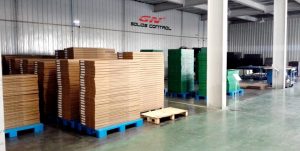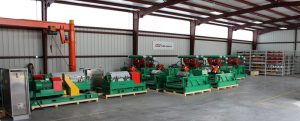Last week there was a news. To many people there are so many big news that this business cooperation is really a routine, not deserving serious attention.
However this news does symbolize something, automation comes deeper into oil and gas industry.
Last week, Schlumberger, the biggest service company in the world, and Rockwell, a giant in automation technology, came into an agreement to make a joint venture, sensia, to combine advantages of both company and bring revolutionary solutions to the oil and gas industry.
This is the trend. The now joint venture want to release the huge potential of automation in oil and gas industry.
Automation has been widely used in many other industry sectors, such as iron and steel industry, for the control of complex machinery. Many advance technologies such as DCS and SCADA are a backbone of many highly complex process control. One good example is the control of steel pipe straighterner, which make steel pipe straight, round, with less hook end. This is a very advance control technique, which uses wavelet theory to control the accuracy of straightener wheels. This is the accuracy of half millimeter with tens of pressing force on straightener with response speed of micro seconds as the steel pipe is going through the machine at 1m/s speed.
In the oil and gas industry automation technology has been primarily focused on automated operation of remote oil and gas fields, monitoring long distance pipelines , and data collection. This is just the basic application of automation technology, they have no comparison with automation technologies used in other industry sectors such as iron and steel industry.
In solids control technology, there is not much application of automation. However GN Solids Control has been making effort to use automation technology in its products, such as decanter centrifuges. Now GN Solids Control is controlling is decanter centrifuges and monitor their operation parameters with HMI. GN Solids Control is also working on more advanced control technology, such as interlock logics to protect the centrifuges, smart control of differential speed for optimized separation of fed solutions, etc.
Application of automation in solids control equipment has tremendous potential to enhance equipment performance, explore new territories unthinkable ever before, and make great revolution come true.
One big potential of the marriage of automation with solids control equipment is smart shaker screen.
Shaker screens being used in solids control are all “passive” screens because they never play an active role in solids control. They do not know, and there is no way for them to know the condition of incoming fluids, its solids contents, and allowed operation parameters. They simply rock, and rock.
With smart shake screen, this situation will be changed completely one day.
Smart screen execute command from controller, which collect all the information throughout the drilling process, to determine the optimum operating parameters of smart shaker screens.
Smart screen is a power shaker screen.
Traditional shaker screens are mounted on shaker basket with two vibrators linked to the basket. The vibrators “rock” the basket to generate vibration,
Biggest disadvantage of such structure is its g-force. Usually G force generated is about 6-7, with very high quality and high strength basket being able to generate 8-8.5G force. There is not much room for G force to increase in such structure to increase, limited by the strength of steel frame.
However the G force of smart screen can generate unbelievable G force, up to 50G. This is 6 times the G force of best shale shaker.
And the G force is applied on the screen, not on the basket. There is no need for super-strong steel for the basket.
The secret is the structure of the smart screen.
Underneath the smart screen there is an array of excitors, arranged in a pre-determined position. Each excitor will rock at electrical signal. There are tens of such excitors under the smart screen. With changing timing and strength of electrical signal, the intensity and frequency can be adjusted, to generate right G force for the coming sludge. For instance, G force will be gentle if solids concentration is low, or majority of solids in the sludge are fine particle. If solids concentration is high, or big particle are the majority of solids phase, G force needs to be bigger.
Obviously, two conditions are needed. One is the control of excitors. With complex algorithm, different G force and be generated, or even different G force are generated for different parts of the smart screen. The other is the sensing of particle break-down of incoming sludge. Without automation technology, all these stories will remain stories.
Smart screens sound attractive, yet it is very difficult to make them come true. You have to have a mathematical model, on which you get theoretical solutions to have resonance, and to what magnitude this resonance can be, and what parameters are to be adjusted to tune the intensity of G force.
After all these, a simulation model needs to be established to “run”, to verify the viability of the model, any deficiencies need to be addressed and corrected.
Then it comes to the prototype.
First you have to make the excitors identical. This is not supposed to be a manufacturing challenge as technology today make mass production of such excitors with high consistency possible.
Then the fabrication technology to make mounting the excitors reliably, and wiring them properly, for the very tough operation conditions they are going to face.
The next challenge is the bias effect of many factors resulting from manufacturing and fabrication process. Some of them many have big impact on the resonance of the excitors.
Smart screen appears to be a very promising products, it needs to go through a long way before it become mature.
